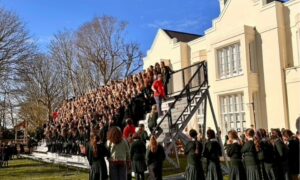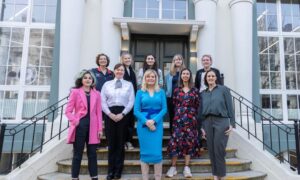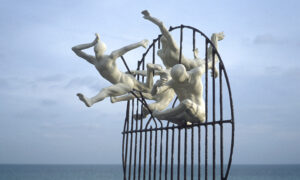One of the joys of being part of the GDST family is being surrounded by inspirational people. They are everywhere. There are our past, our present and our future. At the end of last term, I spoke in assembly about the pioneers in women’s education who are remembered in the names of our four houses: Grey, Gurney, Lyttelton and Stanley.
Last week, the GDST opened the voting for our Alumna of the Year. Camilla Bowry (founder of charity Sal’s Shoes, delivering shoes to children living in poverty around the world), Dr Nikki Kanani MBE (who has been at the forefront of the fight against Covid, playing a leading part in the roll-out of the largest vaccination programme in the health service history) and Samira Ahmed (the journalist, writer and broadcaster, who last year made history by winning a landmark case against the BBC for equal pay) are among the eight living legends on the shortlist this year.
In assembly this week, as we began the discussion about what to name our classes next year, Mrs Ashdown introduced us to brilliant women from Brighton’s past and told us the stories behind some of the blue plaques that adorn the streets around the school. Now that academic classes are to be separated from pastoral form groups, we have an opportunity: naming the classes numerically, or alphabetically, or even after places or animals would be far too simple, and – more to the point – it’s just not our style. Mrs Ashdown is thinking big, and thinking bold. We are looking to the women who, in the words of Mrs Ashdown, “changed the course of history and made the world a better place” – and there are plenty of them.
Like Sarah Forbes Bonetta, the Egbado princess, orphaned, enslaved, freed by a Captain of the British Navy, who became a ward to Queen Victoria and, with the Queen’s permission, married in the Church of St Nicholas, Brighton; Phoebe Hessel, buried in the Church of St Nicholas, who disguised herself as a man to serve in the British Army and was wounded in the Battle of Fontenoy in 1745; and Minnie Turner, who established a refuge for suffragettes in Brighton, many of whom were recovering from imprisonment and the effects of force-feeding. These women once inhabited the spaces in which our school now stands. They are women with local connections, but universal significance in terms of the message they sent to future generations.
Speaking of future generations, last Friday saw the launch of ‘Bright ‘n’ Wimsy’, our creative collaboration with Wimbledon High school. Flying the flag for the future were 34 students from Wimbledon and Brighton, who came together for a day of design thinking and exploration around the theme of identity. The team names chosen by our Year 9 and Year 10 students paid homage to the past (Cleopatra, Emmeline Pankhurt, Mary Seacole, Mary-Ann Evans, Maya Angelou and Princess Diana) while, in their attitudes and approach, the girls looked to the future. Cris Turple, Head of Digital Learning and Innovation for the GDST, commented on why she enjoys working with this age-group – Generation Z: they are the “ethical purchasers, the influencers and the change-makers” of tomorrow.
Listening to the ideas shared by our students last week, I wondered how many of their names would one day appear on the shortlist for GDST Alumna of the Year or, in fact, on some of the blue plaques that will, in time, appear on the buildings in Brighton & Hove.
They are inspirational people already.
Future leaders who will “change the course of history and make the world a better place”.


